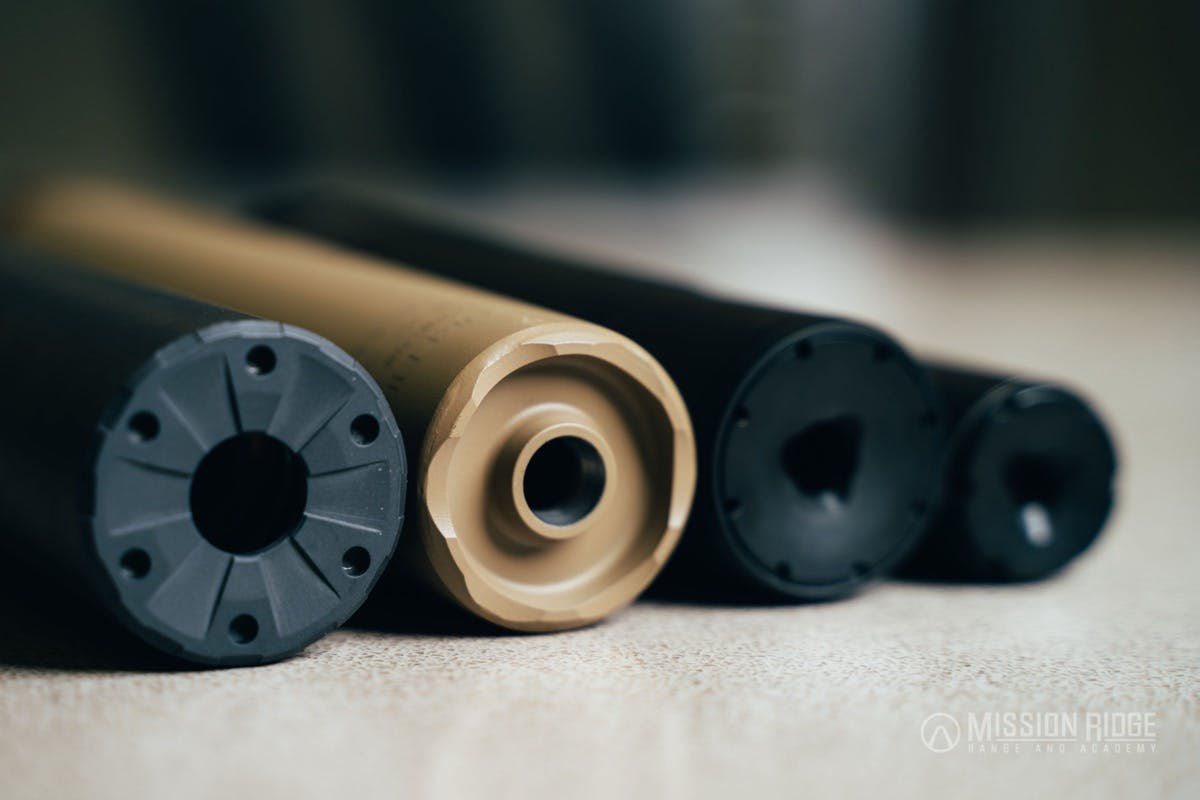CHOOSING THE RIGHT SUPPRESSOR FOR YOU
Yes, it IS legal for a civilian to purchase a suppressor (aka silencer). When exploring the world of suppressors, you will find that there is more to them than just a tube of metal. To begin, you need to first identify what caliber bullet or bullets you desire to suppress. What you can shoot through your suppressor comes down to the diameter of the bullet, the pressure produced from the cartridge, and the rate of fire in which you will be shooting. Once you have identified what you’re going to suppress, you can choose features and manufacturing technologies that give you the best reduction of sound for your gun.
Topics to consider while shopping for a suppressor:
- Size of Suppressor - The size of the suppressor does matter. Fundamentally, the larger the volume of the suppressor, the quieter it will be. Yet, with size comes weight, so if you are looking to increase suppression and don’t want a lot of extra weight look for a suppressor made from a lighter material.
- Attachment Method - A critical component to a suppressor is how it will be mounted on your gun. There are two types of attachment methods, quick detach and direct thread. Quick detach (also known as QD) allows you to put a muzzle device onto a gun (or multiple guns) that provides a common attachment point for the suppressor. Direct thread suppressors go straight onto the threads of the barrel, but they will have a specific thread pitch (Example: if the direct thread mount on the suppressor is 5/8x24 it can only go onto a 5/8x24 threaded barrel). Be sure to understand attachment methods prior to purchasing your suppressor.
- Full Auto Rated - This is indicating the rate of fire that the suppressor can handle. If you plan on shooting quickly through the suppressor it is always good to get a suppressor that can handle high temperatures and rapidly fired subsequent rounds. We are addressing our semi-auto customers here.
- Multiple Calibers - What you can shoot through a suppressor comes down to the diameter of the bullet, pressure, and the rate of fire. You can shoot bullets with smaller diameters than the max diameter of the suppressor. As an example, a 30-caliber suppressor can accommodate more than just 30 caliber projectiles, it can also shoot smaller diameters like 223.

